four basic body tissues
1. epithelial
2. connective
3. muscular
4. nervous
epithelial tissues
◦ Covers body surfaces
◦ Lines hollow organs, cavities and
ducts
◦ Form glands
◦doesn't move
connective tissues
Protects and supports the body and associated organs
doesn't move
muscular tissues
◦ Specialized cells which contract and generate force
◦
Generates heat
◦ moves and has three types
types of muscular tissues
skeletal, cardiac, and smooth
nervous tissues
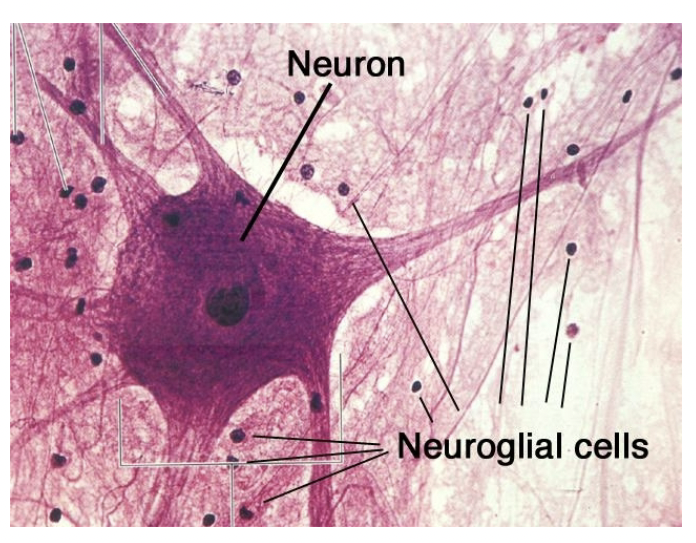
◦ Detects changes in conditions inside and outside of
the
body
◦ Generate electrical signal
◦ communication and sensing
neurons
Generates and conducts nerve impulses
neuroglia
◦ Provides metabolic and physical support of neurons
◦ 5:1 ratio
when compared to the number of neurons
which tissues are widely disbursed throughout the body where are they mostly found?
epithelial and connective tissues and found within the body's organs
Bone tissue, blood and cartilage are types of which tissue?
connective
Epithelial tissue does not contain -----, while connective tissue does contain -----
blood vessels
why is the epithelial l tissue is always found adjacent to connective tissue?
to allows epithelial
tissue to receive the nutrients and oxygen
that it needs, as well allow for removal of waste products
how are the epithelial tissue cells arranged?
in single or multiple layers
the function of epithelial tissue cells:
◦ Selective barrier to limit or allow
substances into/out of the
body
◦ Release products produced by the cell
into free
surfaces
◦ Protects against the abrasive
influences of the bod
surfaces of epithelial tissue
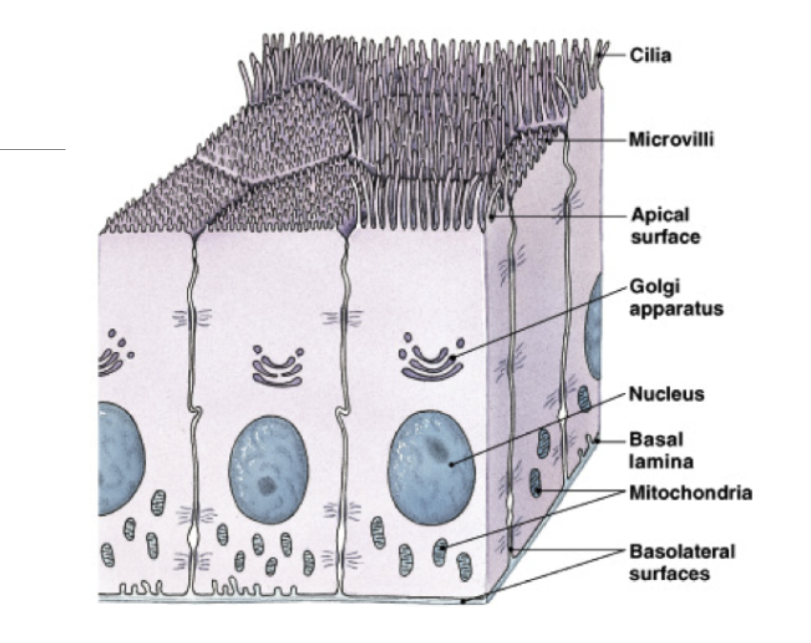
◦ apical
◦ lateral
◦ basal
◦ basement membrane
apical surface
may contain cilia or microvilli
lumen of the organ
lateral surface
faces the adjacent wall
has cell-cell junctions
basal surface
deepest layer
opposite of apical
Anchors epithelium to basement membrane
basement movement
Secreted by the epithelium
sits on a connective tissue
layers of epithelial tissues
simple - one layer
Pseudostratified - false layers
stratified - more than one layer
shapes of cells of epithelial tissues
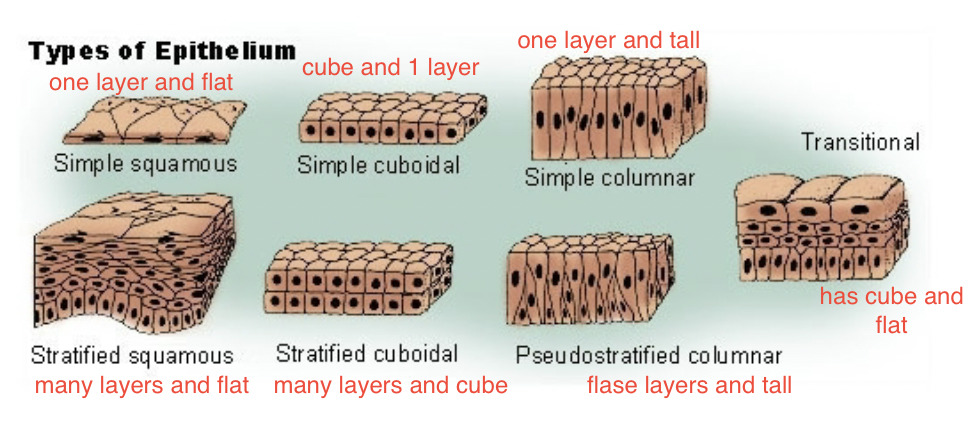
squamous - flat
cuboidal - cube cells
columnar - taller than wide
transitional - stretch (squamous and cuboidal)
1. stratified squamous
2. stratified cuboidal
3. stratified Columnar
1. skin/mouth/vagina - protection
2. sweat glands - makes water and ions
3. mammary gland/larynx - mucus
1. simple squamous:
2. simple cuboidal :
3. simple columnar :
1. blo vess/lung - permits exch of nutri, gases ,wastes
2. kidney/glands - makes and abso water
3. digestive organs - abso nutri, produces mucus
exocrine glands
secrete
substances into ducts which are
then emptied onto
skin or the
hollow organs
exocrine glands secretions
◦ Saliva
◦ Digestive enzymes
◦ Sweat
◦ Cerumen (ear
wax)
◦ Sebum (oil
cells of connective tissues
◦ Fibroblasts
◦ Macrophages
◦ Plasma cells
◦ Mast
cells
◦ Adipocytes
functions of connective tissues
◦ Binds, supports and strengthens other
body tissues
◦
Protects and insulates internal organs
◦ Compartmentalizes
structures
◦ Blood serves as the main
transport
system
◦ Adipose tissue stores energy
◦ Main
source of our immune response
extracellular matrix of connective tissues
◦ Protein fibers
◦ Ground substanc
ground substance
◦ Fluid, semifluid, gelatinous or calcified
◦ Supports and binds
cells, store water and allow for
exchange of substances between
the blood and
cells
fibers
collagen - very strong and flexible
elastic - strong and stretches
reticular - support blo vess
blast cells
to sprout
able to undergo cell
division and then secrete
the
extracellular matrix that is specific to
the tissue type
the source of connective tissue
is embryonic tissue
fibroblasts
◦ Large, flat and branching
◦ Typically MOST abundant
macrophages
◦ Develop from monocytes, a type
of white blood cell
◦
Irregularly shaped
◦ Are able to phagocytize bacteria
and
cell debris
◦ Two types
◦ Fixed
◦ Wandering
adipocytes
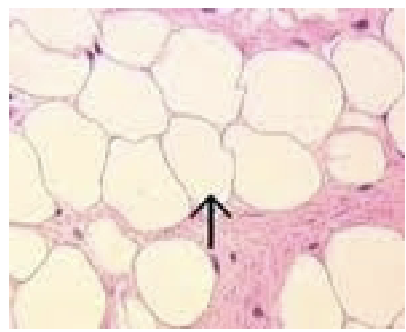
fat cells
store triglycerides
around organ and beneath skin
mast cells
Produce histamine in response to
injury or infection
AREOLAR loose mature connective tissue
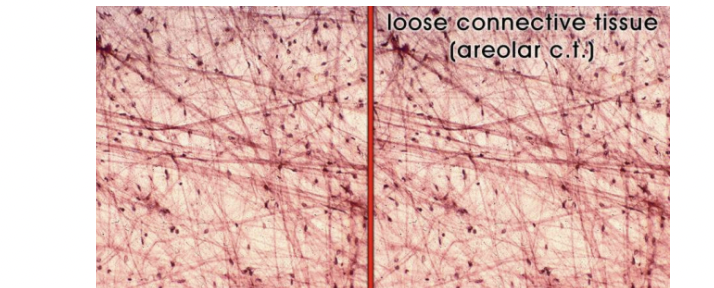
◦ Widely distributed, found in skin,
mucous membranes and around
blood
vessels, nerves and organs
◦ Fx: strength, elasticity
and suppor
ADIPOSE loose mature connective tissue
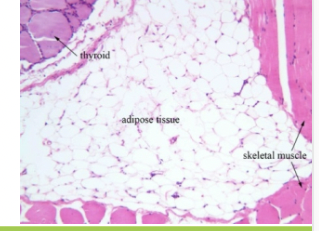
Fx: reduce heat loss, energy
reserve, supports and protects
organs
◦ Found wherever areolar tissue is
present: deep to the skin,
around
the heart and kidneys, behind the
eyeball, within
bone marrow and
pads joints
RETICULAR loose mature connective tissue
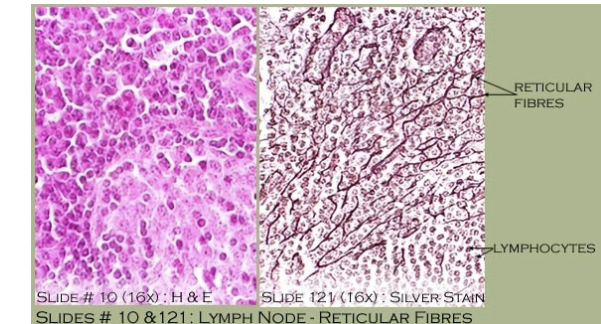
◦ Found in the supporting framework (stroma) of
the liver,
spleen, lymph nodes, red bone
marrow, portion of the basement
membrane
and around blood vessels and muscles
◦ Fx: forms
the stroma of organs, binds together
smooth muscle cells, filters
out old RBC in the
spleen and microbes in the lymph node
REGULAR dense mature connective tissue
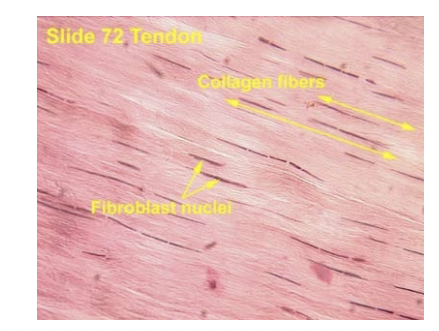
◦ Forms tendons, most ligaments
and aponeuroses
◦ Fx:
provides strong attachment
between structures
IRREGULAR dense mature connective tissue
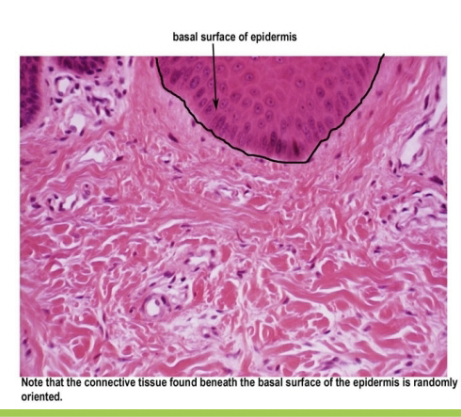
◦ Often exists in
sheets
◦ Fasciae, region of
the
dermis of the skin,
periosteum,
pericardium,
capsules
surrounding organs,
heart valves
◦ Fx:
provides pulling
(tensile) strength
ELASTIC dense mature connective tissue
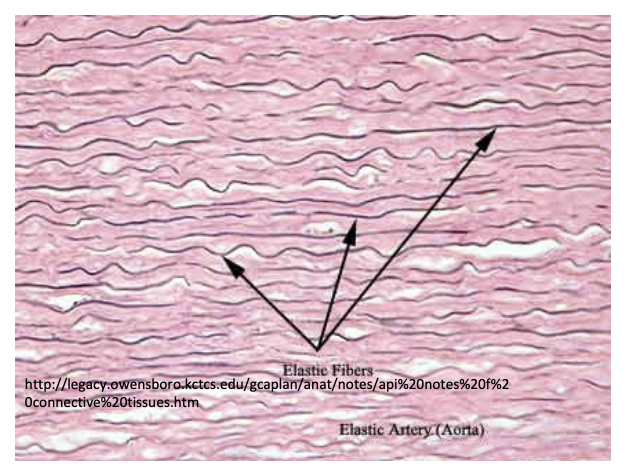
◦ Within lung tissue, walls of elastic arteries,
trachea,
bronchial tubes, vocal cords, and
various ligaments
◦ Fx:
allows stretching of various organ
HYALINE cartilage mature connective tissue
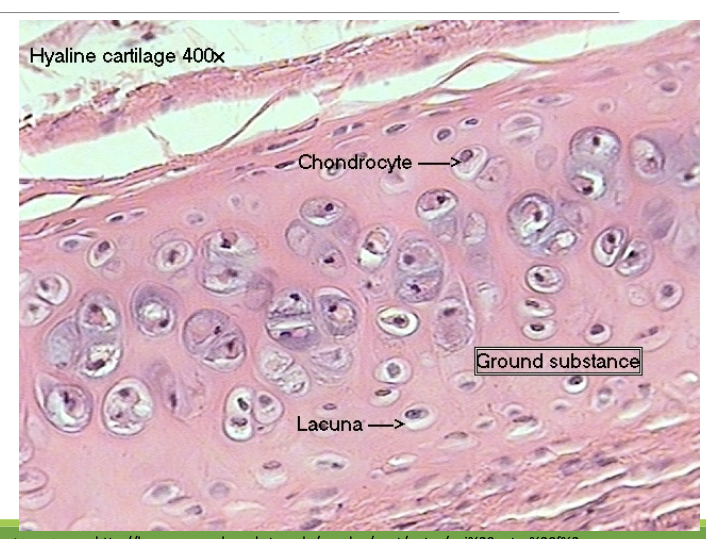
Most abundant
◦ Ends of long bones, nose, ribs, part
of
larynx, trachea, bronchi, embryonic
and fetal
skeleton
◦ Fx: provides smooth surface for
movement at
joints, flexibility and
support
FIBROCARTILLAGE cartilage mature connective tissue
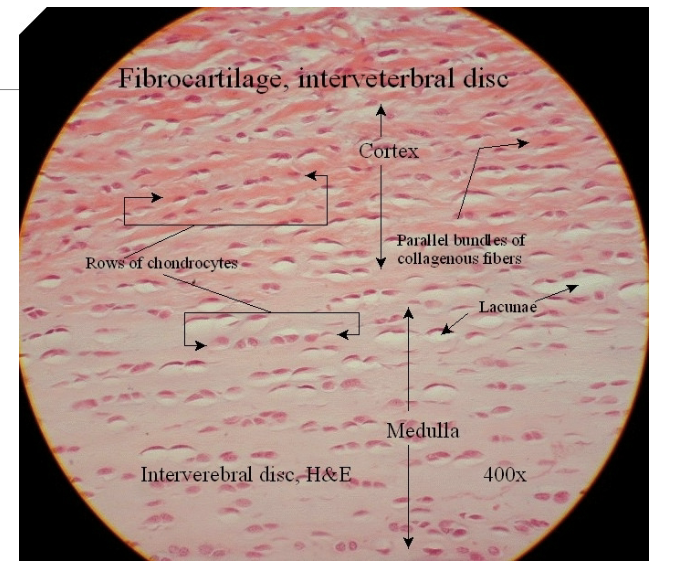
◦ Located in the pubic symphysis,
intervertebral disc, menisci
of
knees and some tendons
◦ Fx: To support and join structures
together
ELASTIC cartilage mature connective tissue
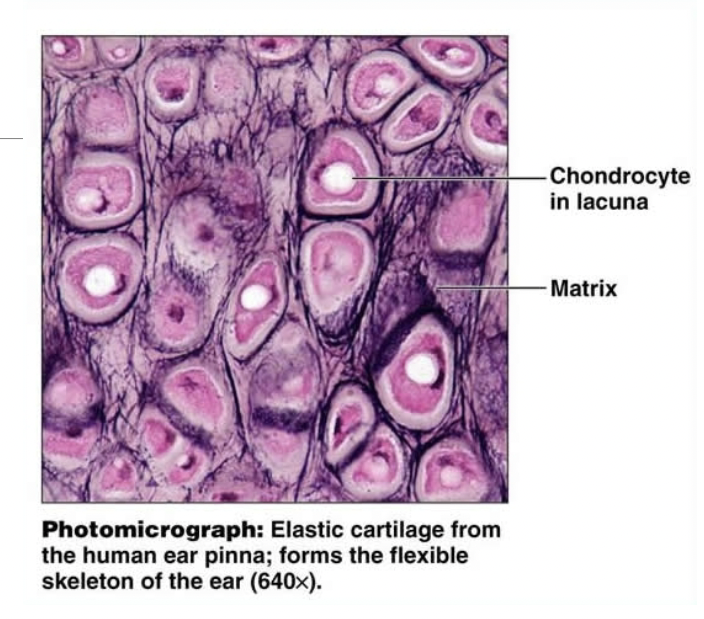
◦ Found in the epiglottis,
external ear and auditory
tubes
◦ Fx: provides strength and
flexibility to structures,
while
maintaining their shapE
COMPACT bone mature connective tissue
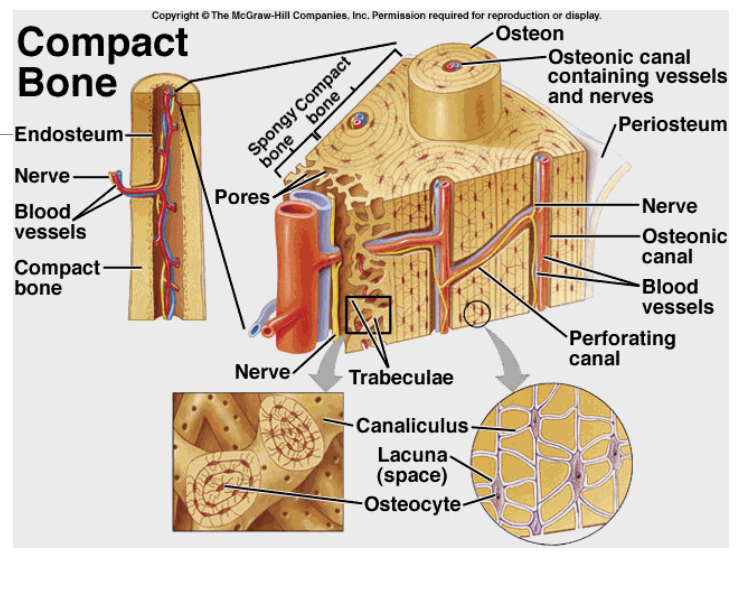
◦ Unit: Osteon
◦ Lamallae: consists of Ca++/P
◦ Lacunae:
contain osteocytes
◦ Canaliculi: pathway for osteocytes to
receive nutrients
◦ Central canal: contain blood vessels and nerves
SPONGY bone mature connective tissue
Does not have osteons, but have columns of bone
called
trabeculae
◦ Contains lamallae, oseteocytes, lacunae
and canaliculi
◦ Red bone marrow fill the spaces between the trabeculae
BLOOD liquid mature connective tissue
◦ Extracellular matrix = plasma
◦ Formed elements = cells
◦
Red blood cells (erythrocytes)
◦ Transport of oxygen and carbon
dioxide
removal
◦ White blood cells (leukocytes)
◦
Phagocytosis, immunity and allergic reactions
◦ Platelets
(thrombocytes)
◦ Necessary for clotting
Mucous membrane
◦ Epithelial layer
◦ Connective tissue layer
◦ Lamina
Propria
◦ Supports epithelium
◦ Bind
◦ Allows
flexibility
◦ Protection
serous membrane
◦ Secretes a watery lubricant (serous fluids)
◦ Two
parts:
◦ Parietal
◦ Visceral
cutaneous membrane
skin
superficial: epidermis
deep:dermis
synovial
◦ Lines the space where bones come togetherjoints
◦ Do not have
an epithelium
◦ Consists of cells that are not continuous
(synoviocytes)
and also contain areolar and adipose connective
tissues
◦ Synovial fluid
◦ Lubricates and nourishes the
cartilage covering the bones of
moveable joints
◦ Contain macrophages
Physical signs of aging
◦ Wrinkles
◦ Thinning of bone with increased risk of
fractures
◦ Muscle atrophy
◦ Pain and crepitus in joints